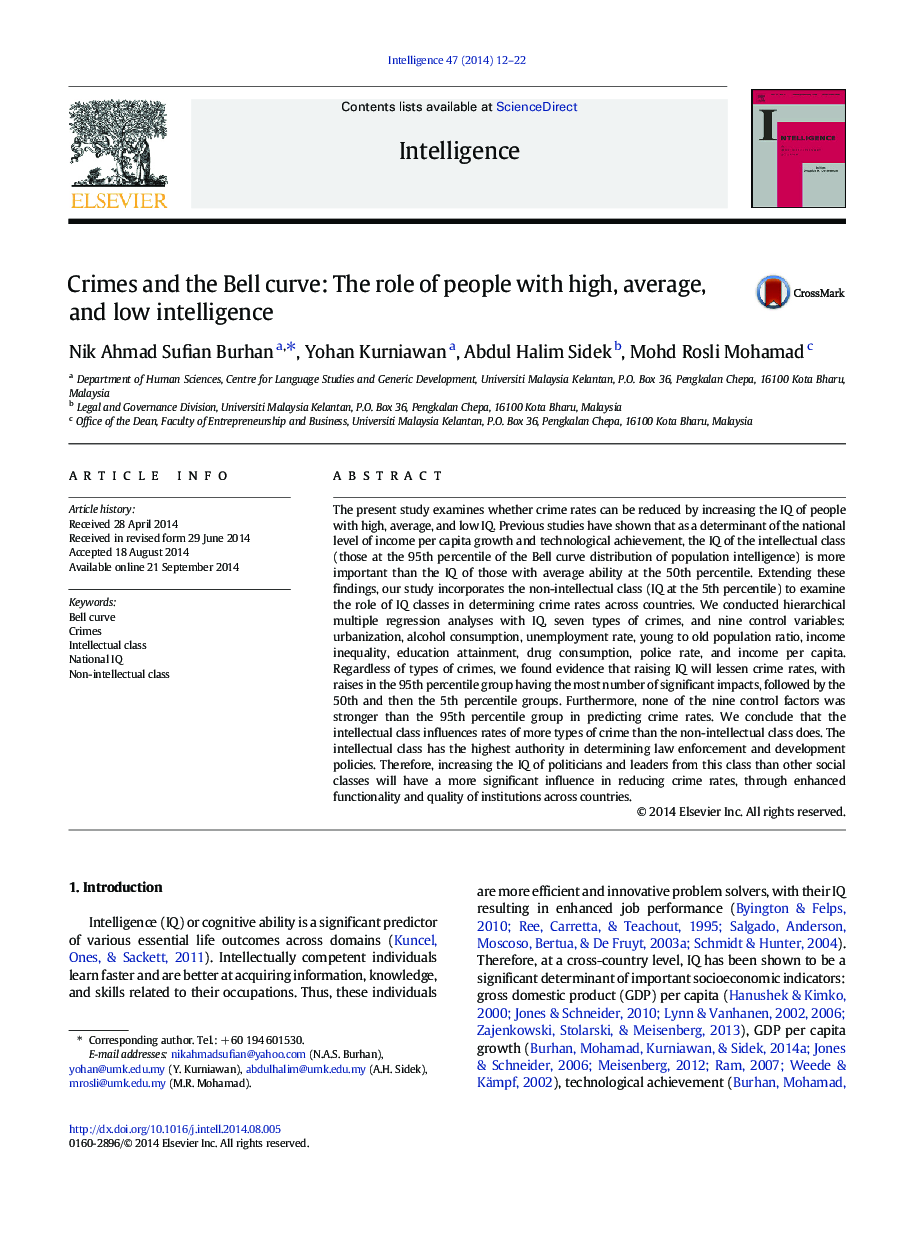| کد مقاله | کد نشریه | سال انتشار | مقاله انگلیسی | نسخه تمام متن |
|---|---|---|---|---|
| 929048 | 1474269 | 2014 | 11 صفحه PDF | دانلود رایگان |
• We incorporate the non-intellectual class in an examination of IQ and crime rates.
• We use seven categories of crimes and nine control variables.
• Raising IQ will lessen crime rates, in particular for the 95th percentile group.
• None of the nine control factors is a stronger predictor than this group.
• Crime rates are reduced when politicians and leaders have strong cognitive skills.
The present study examines whether crime rates can be reduced by increasing the IQ of people with high, average, and low IQ. Previous studies have shown that as a determinant of the national level of income per capita growth and technological achievement, the IQ of the intellectual class (those at the 95th percentile of the Bell curve distribution of population intelligence) is more important than the IQ of those with average ability at the 50th percentile. Extending these findings, our study incorporates the non-intellectual class (IQ at the 5th percentile) to examine the role of IQ classes in determining crime rates across countries. We conducted hierarchical multiple regression analyses with IQ, seven types of crimes, and nine control variables: urbanization, alcohol consumption, unemployment rate, young to old population ratio, income inequality, education attainment, drug consumption, police rate, and income per capita. Regardless of types of crimes, we found evidence that raising IQ will lessen crime rates, with raises in the 95th percentile group having the most number of significant impacts, followed by the 50th and then the 5th percentile groups. Furthermore, none of the nine control factors was stronger than the 95th percentile group in predicting crime rates. We conclude that the intellectual class influences rates of more types of crime than the non-intellectual class does. The intellectual class has the highest authority in determining law enforcement and development policies. Therefore, increasing the IQ of politicians and leaders from this class than other social classes will have a more significant influence in reducing crime rates, through enhanced functionality and quality of institutions across countries.
Journal: Intelligence - Volume 47, November–December 2014, Pages 12–22
